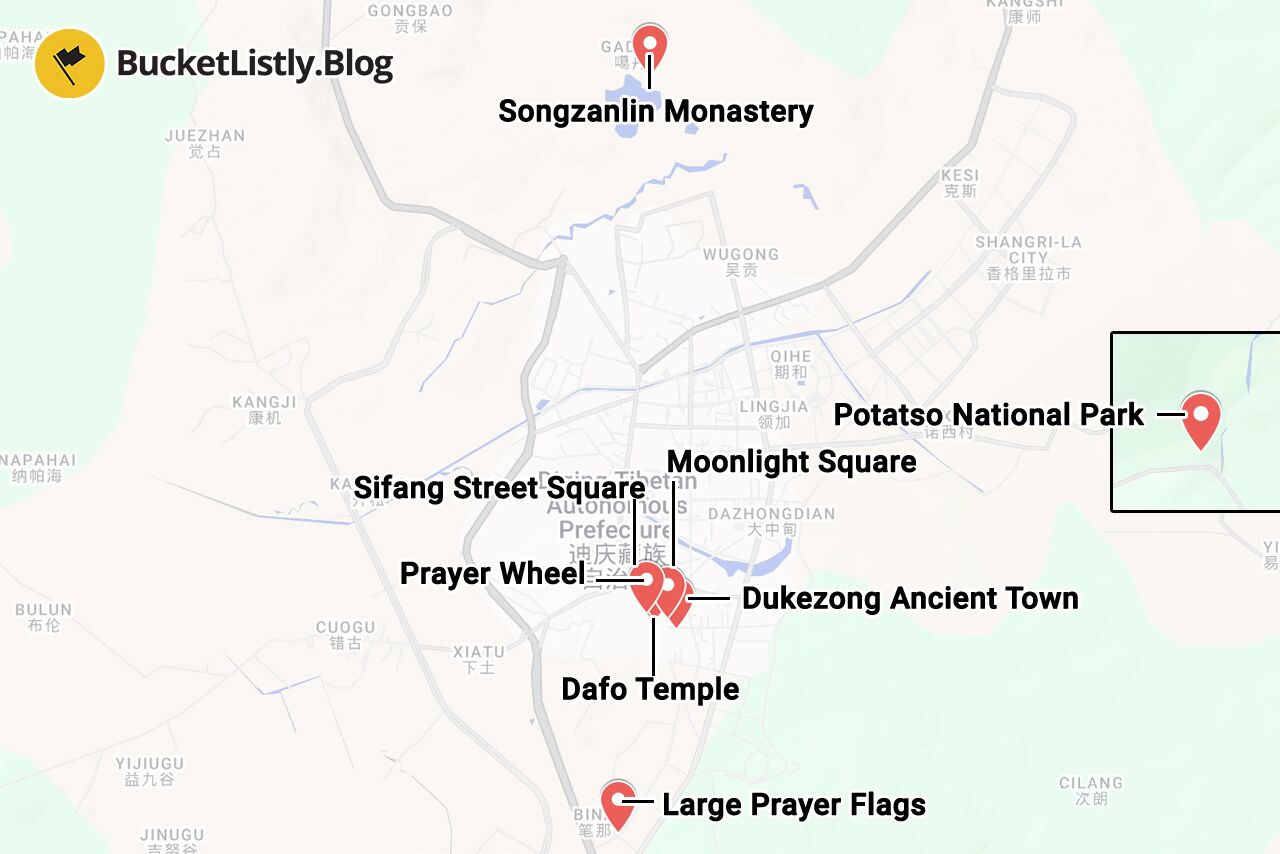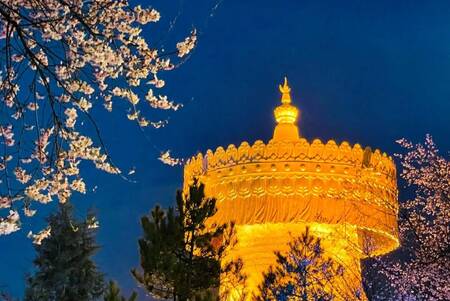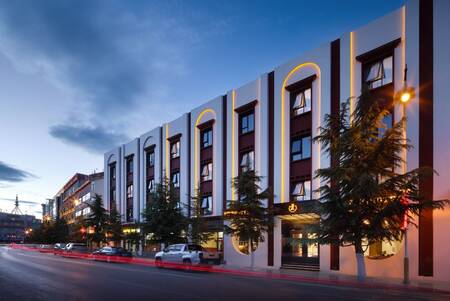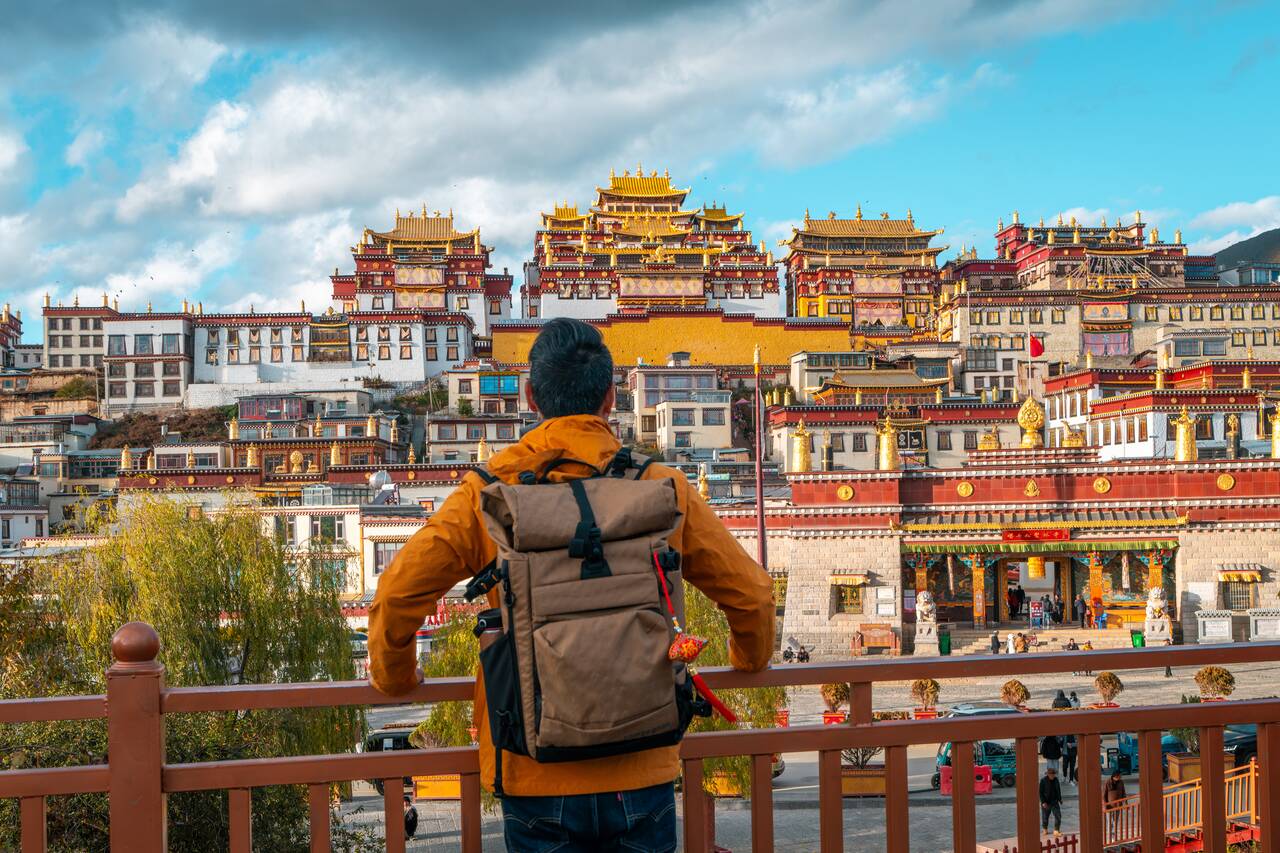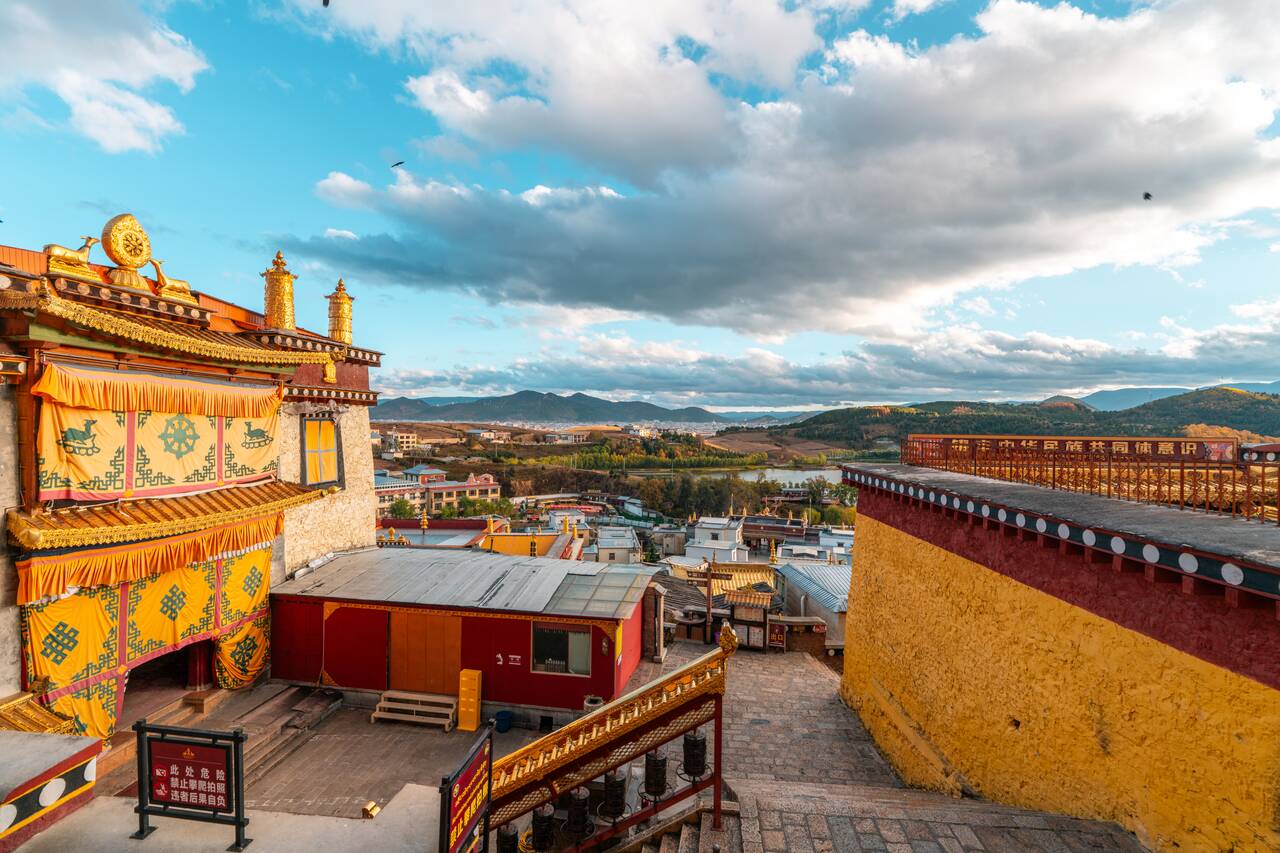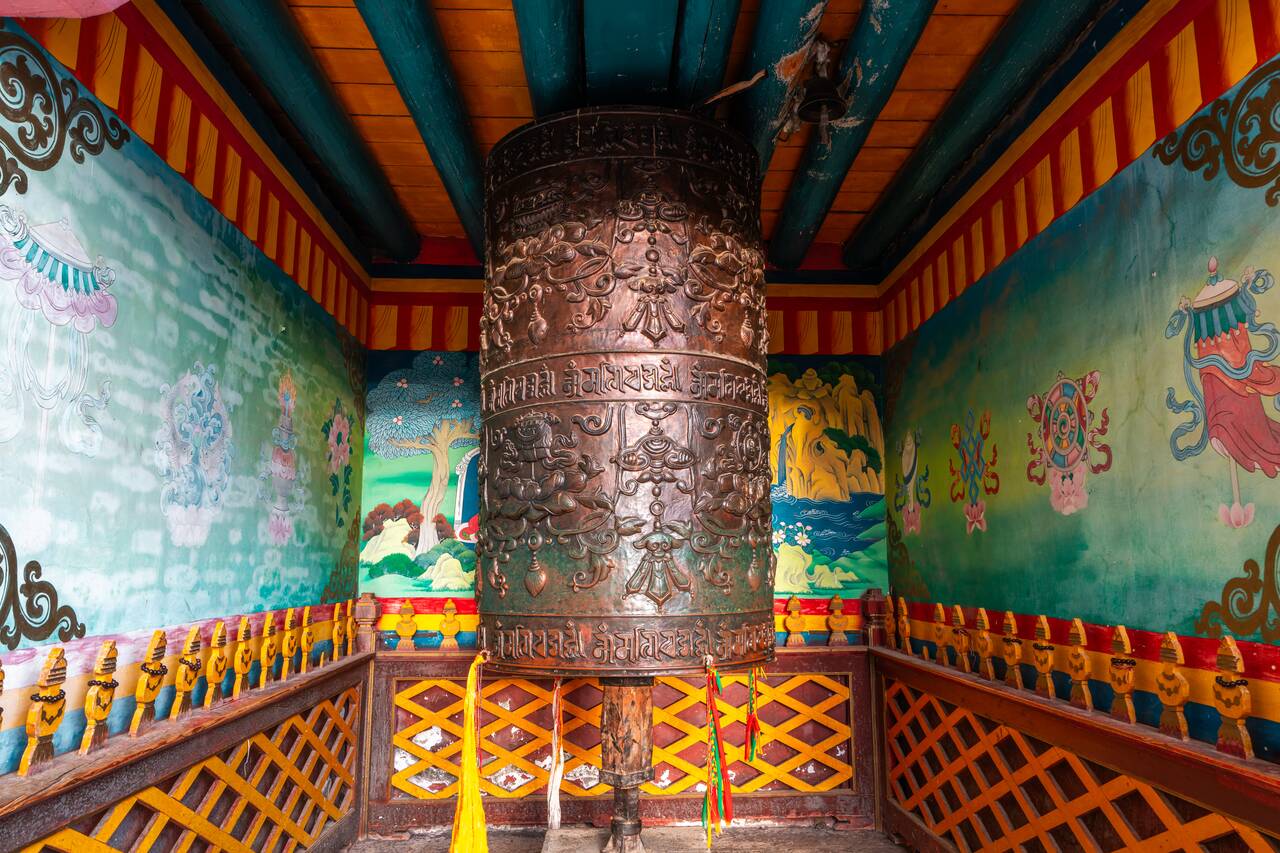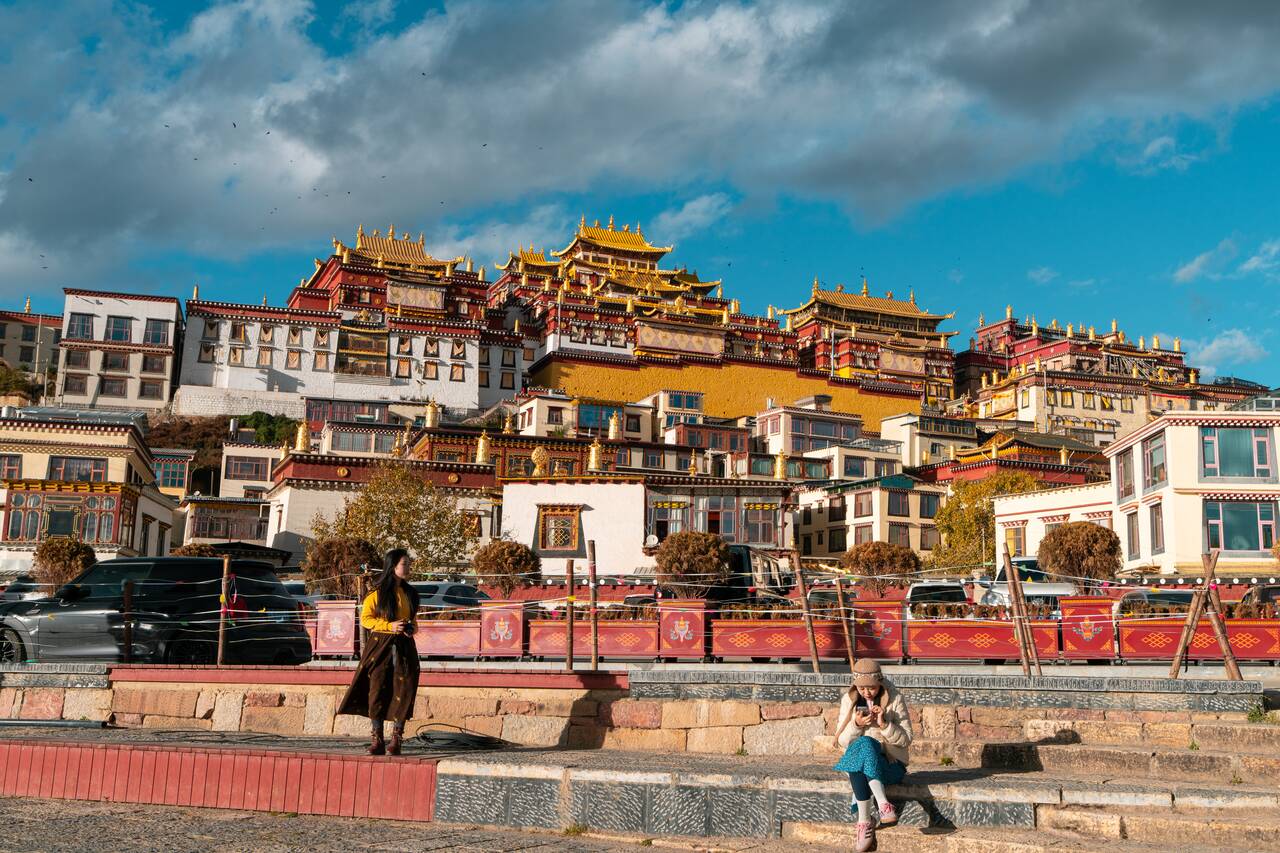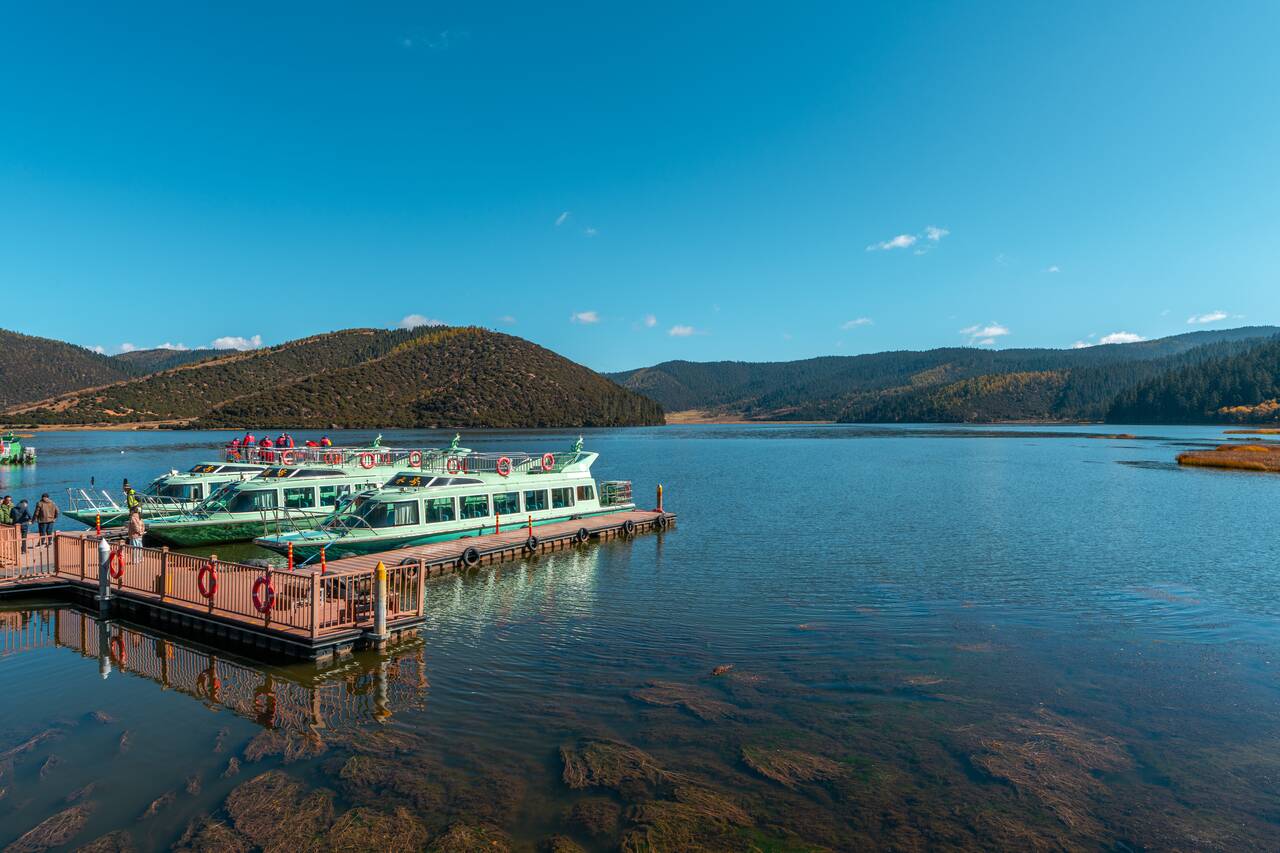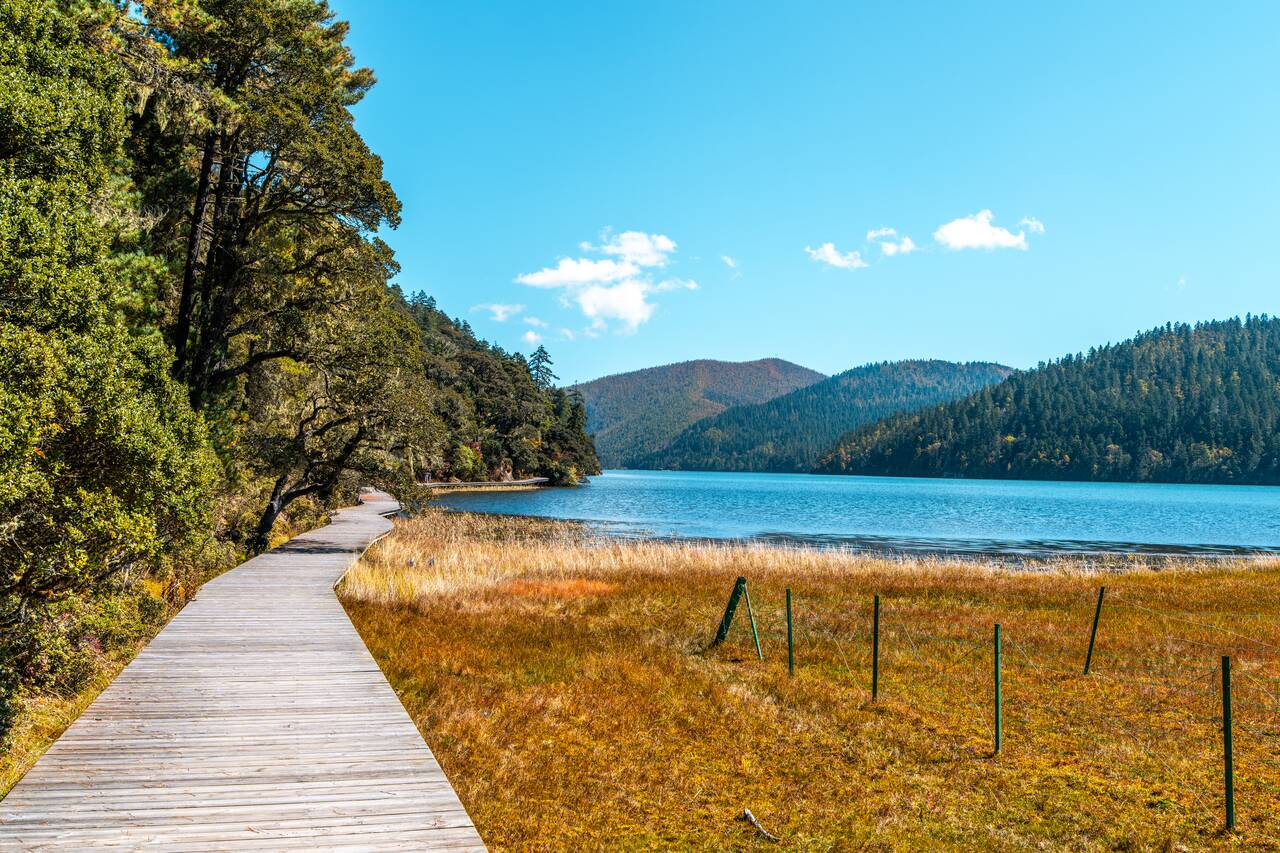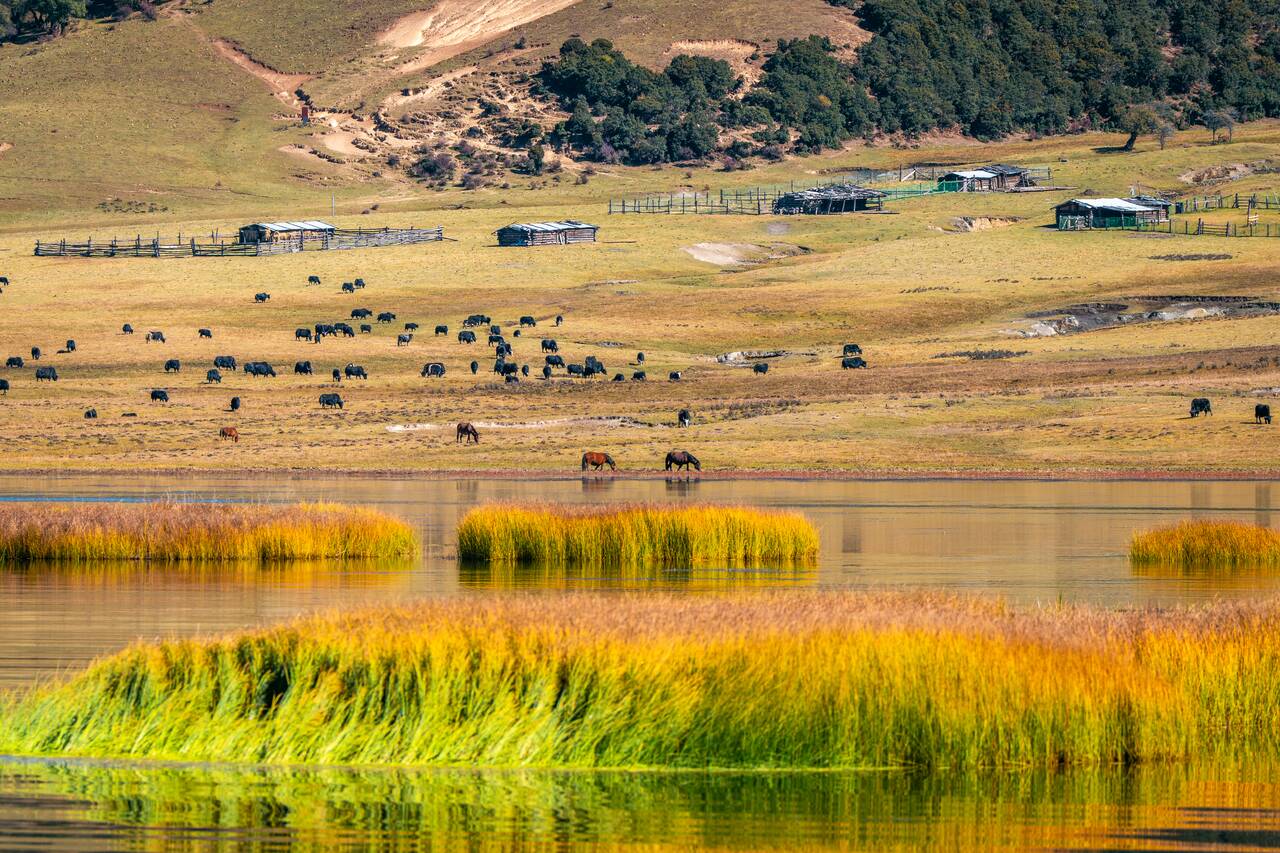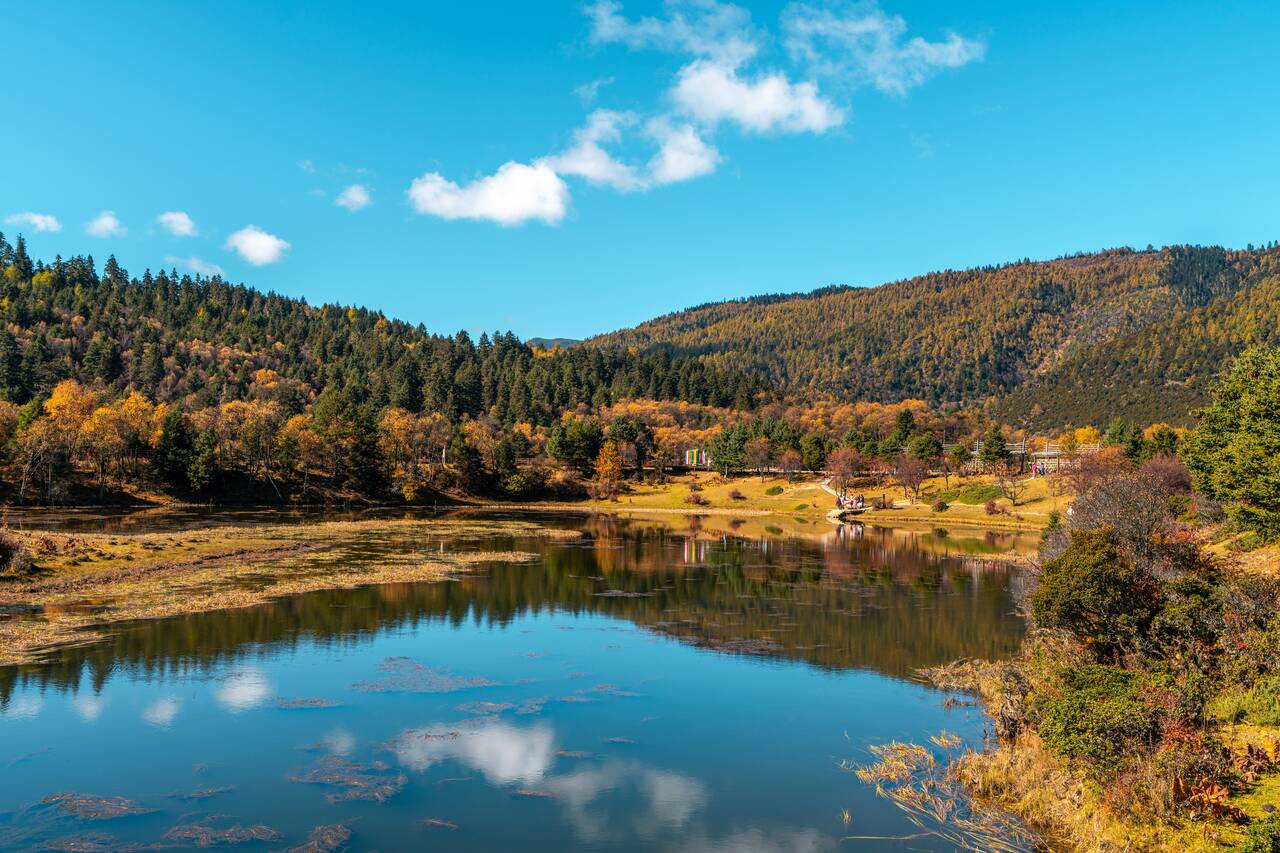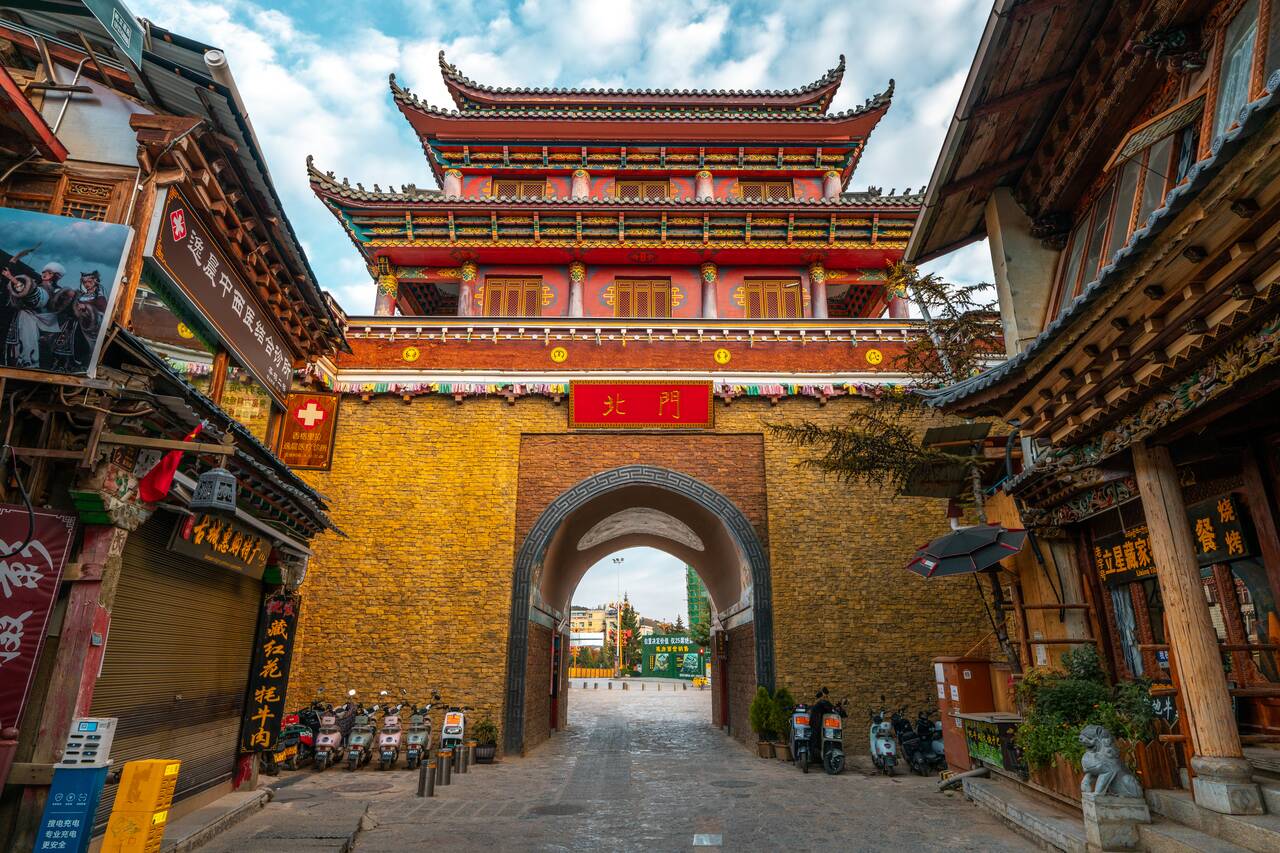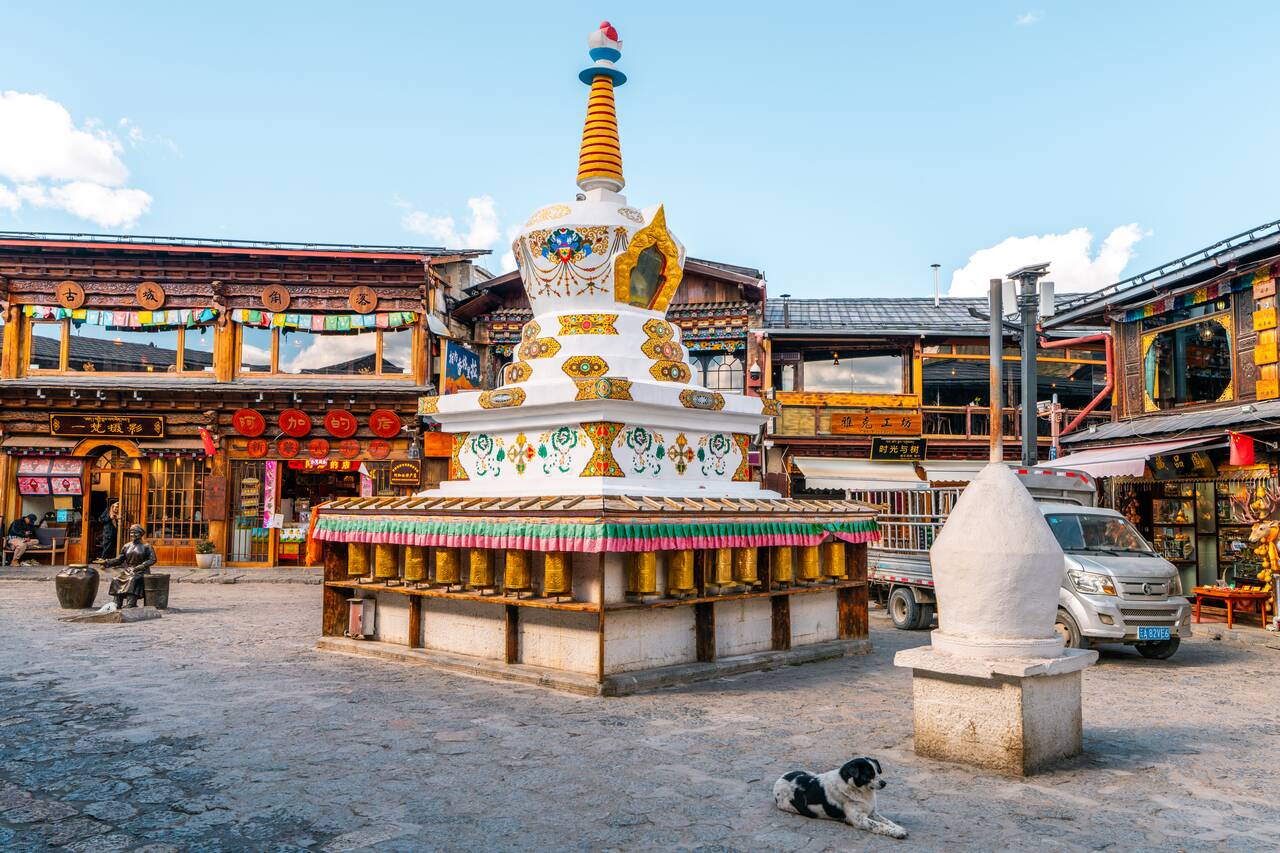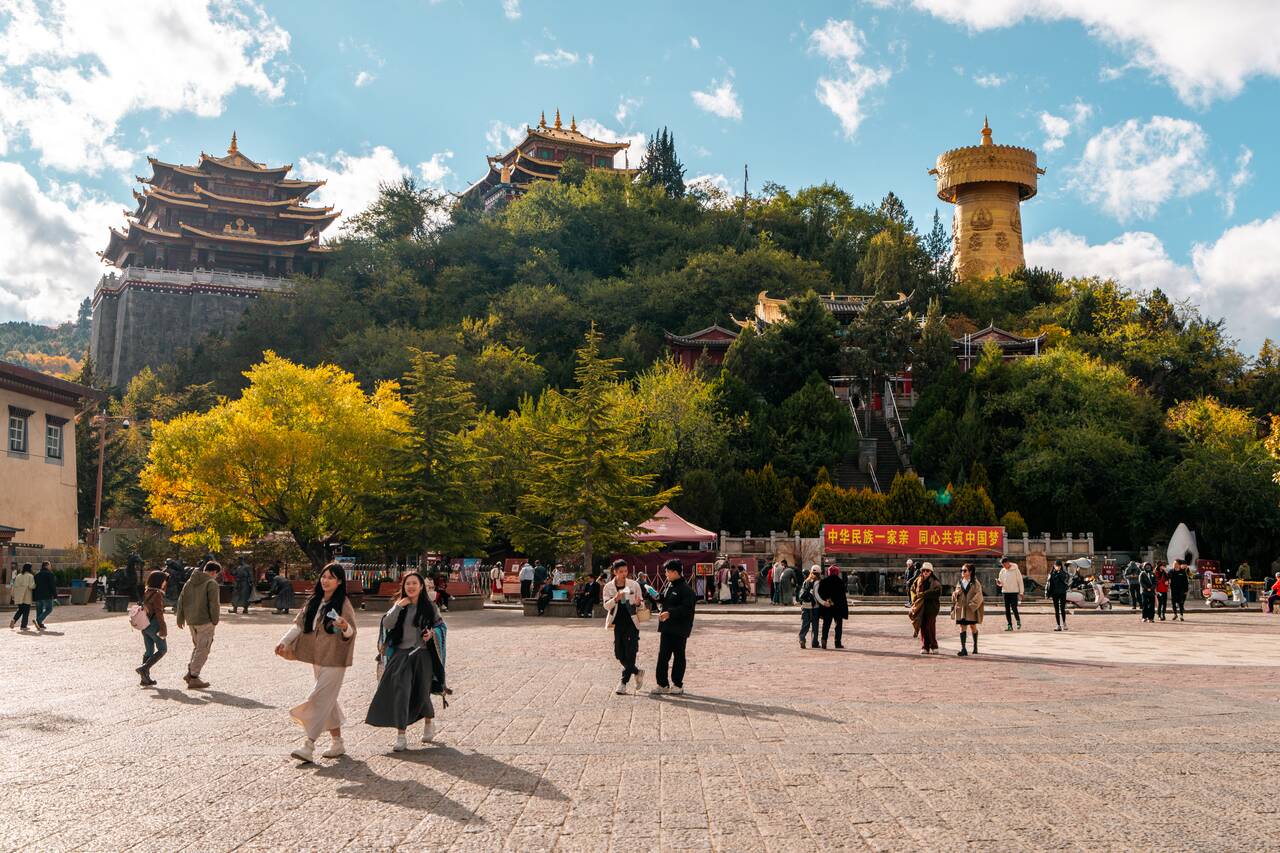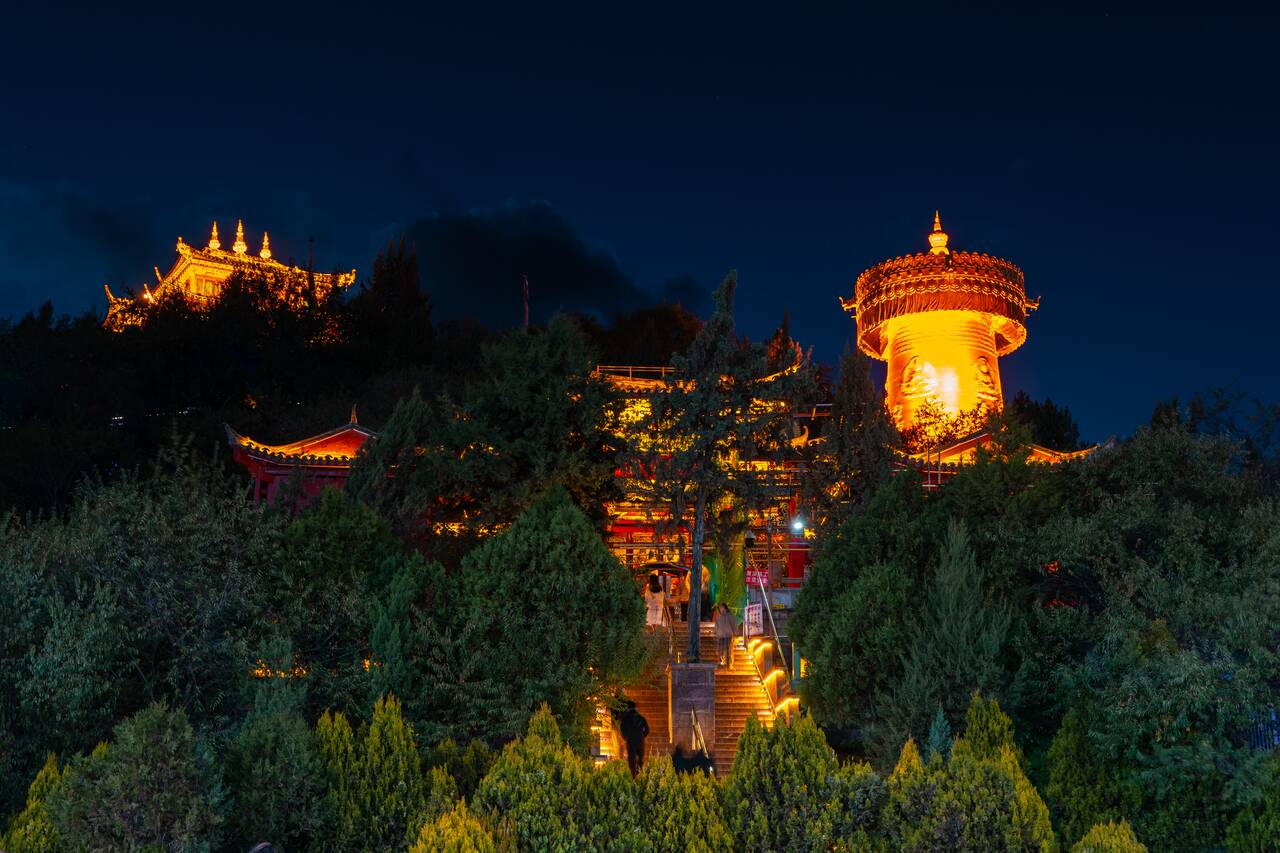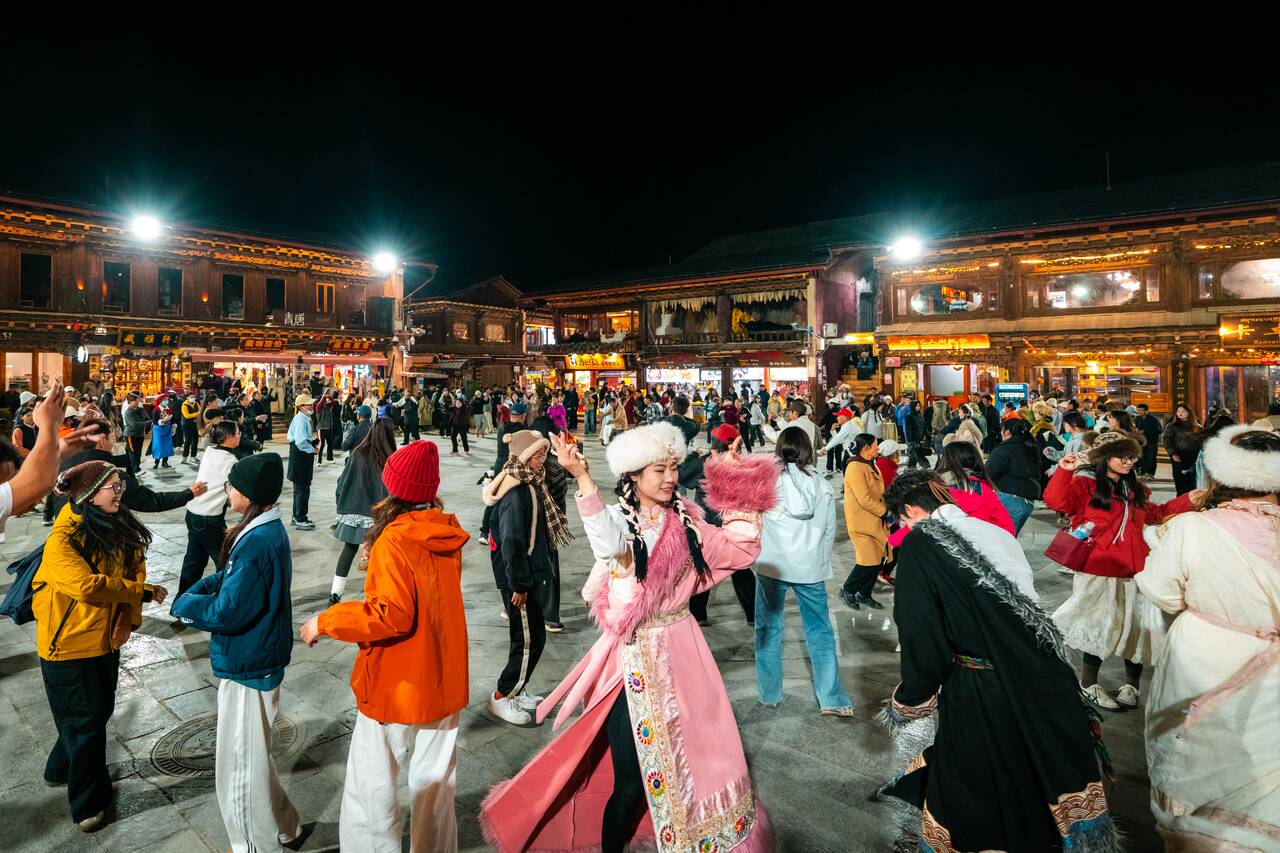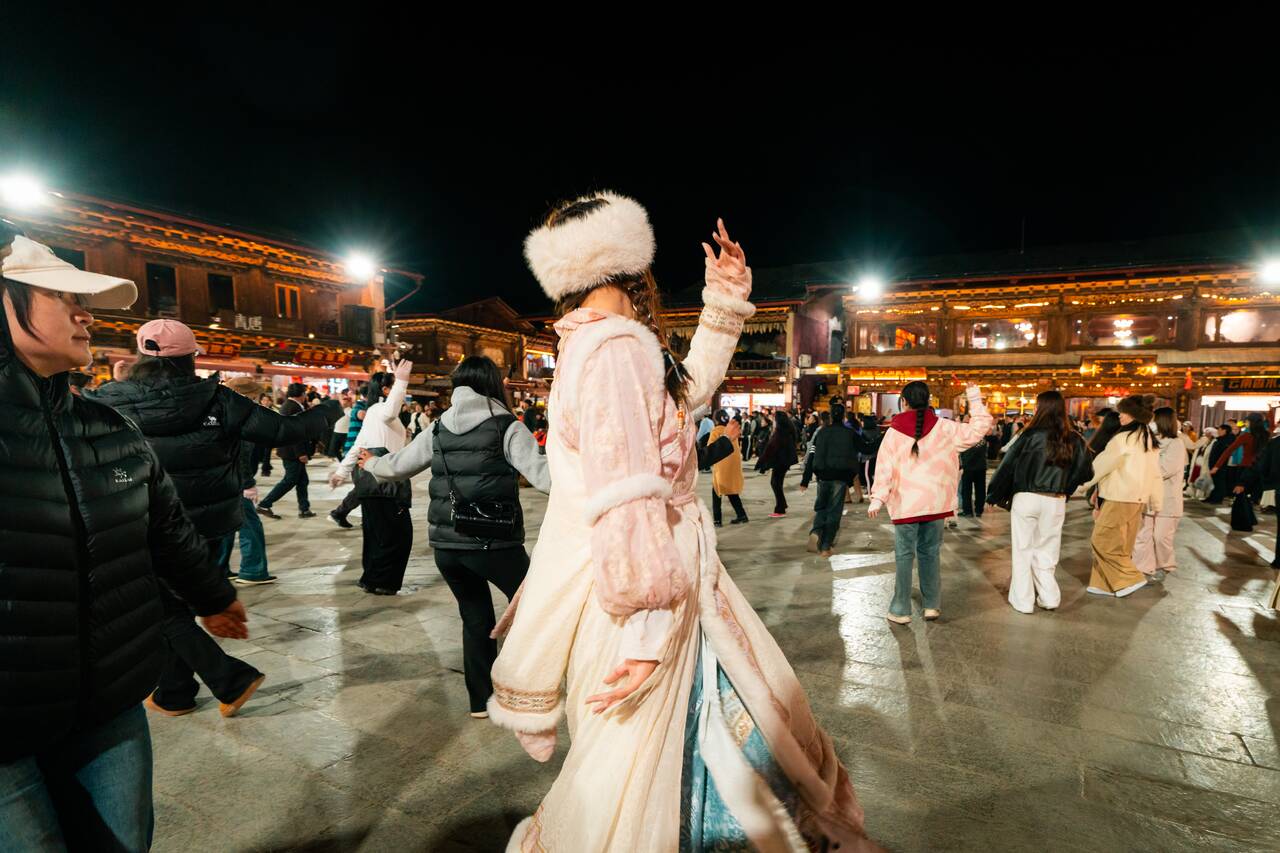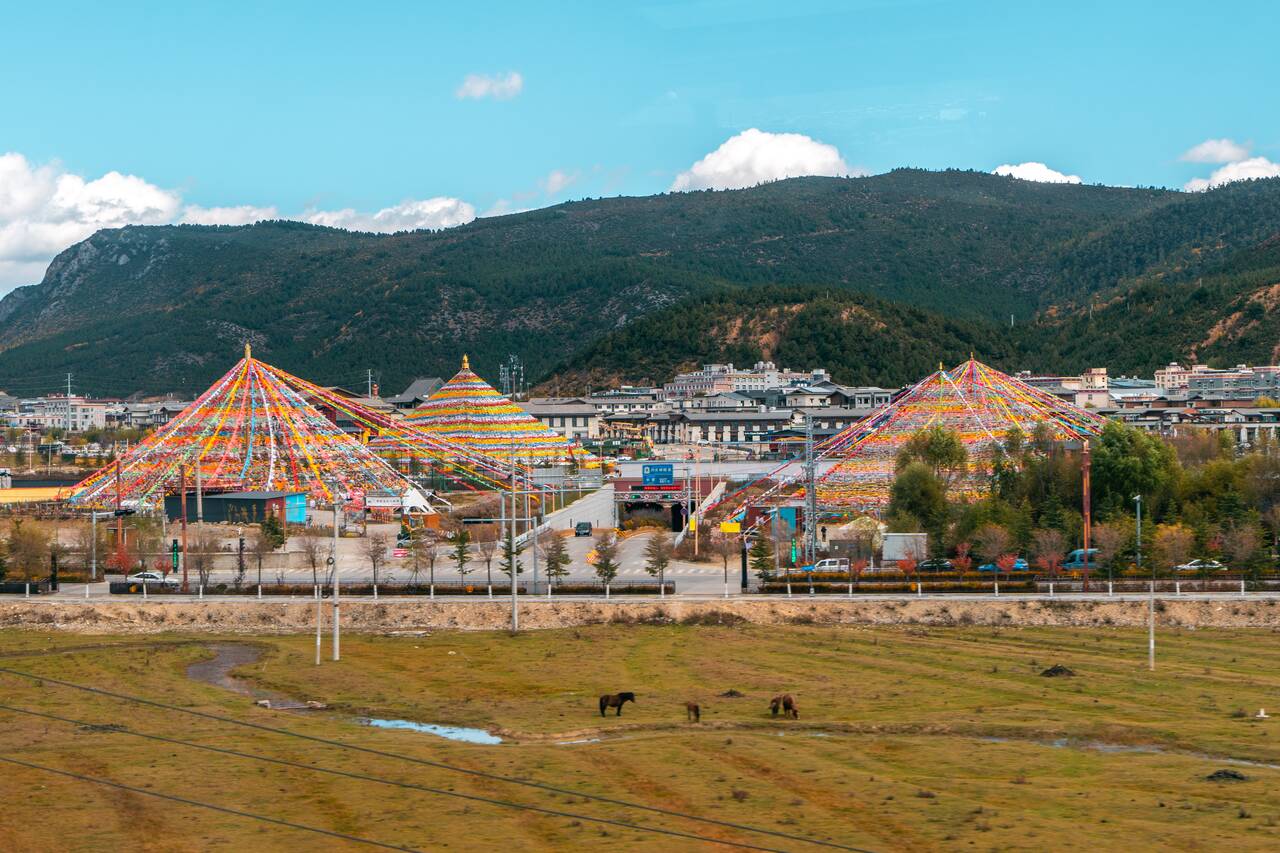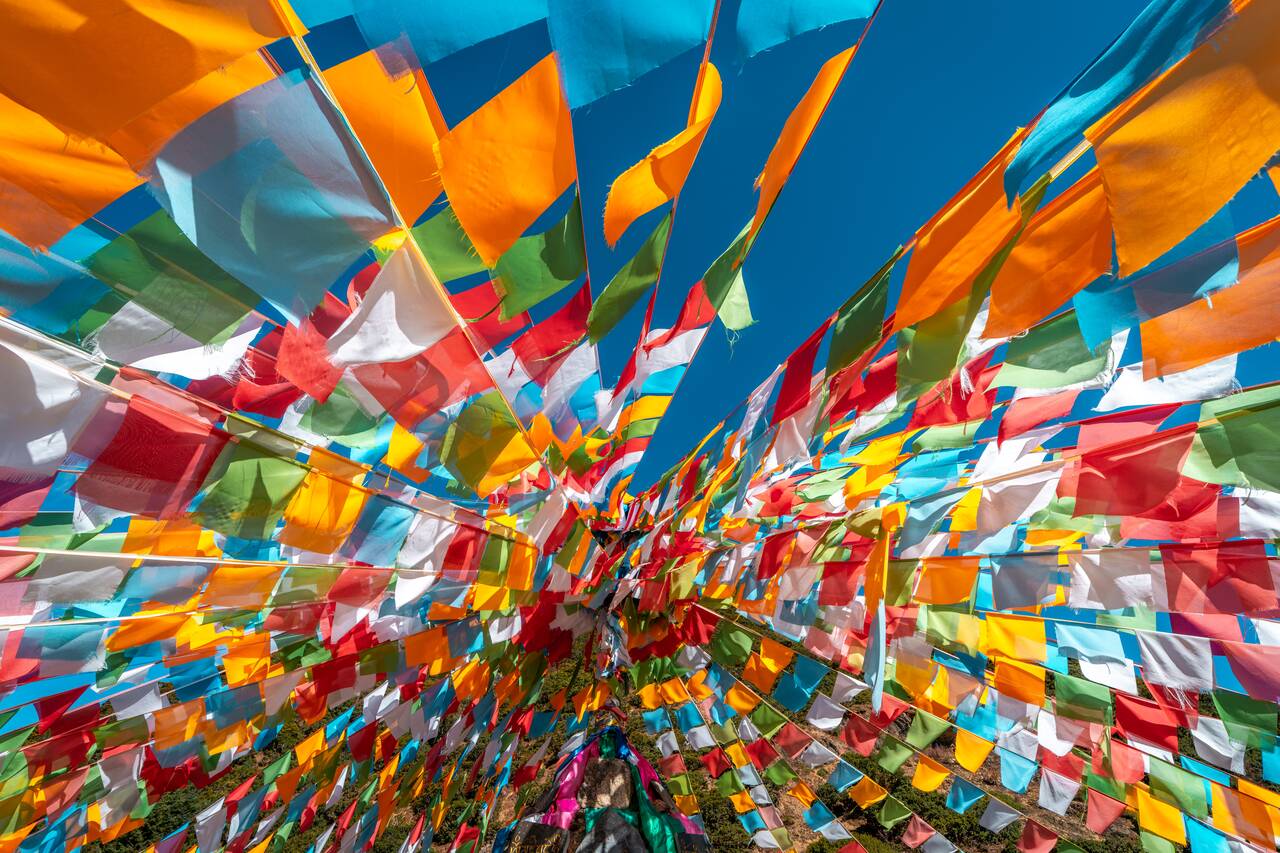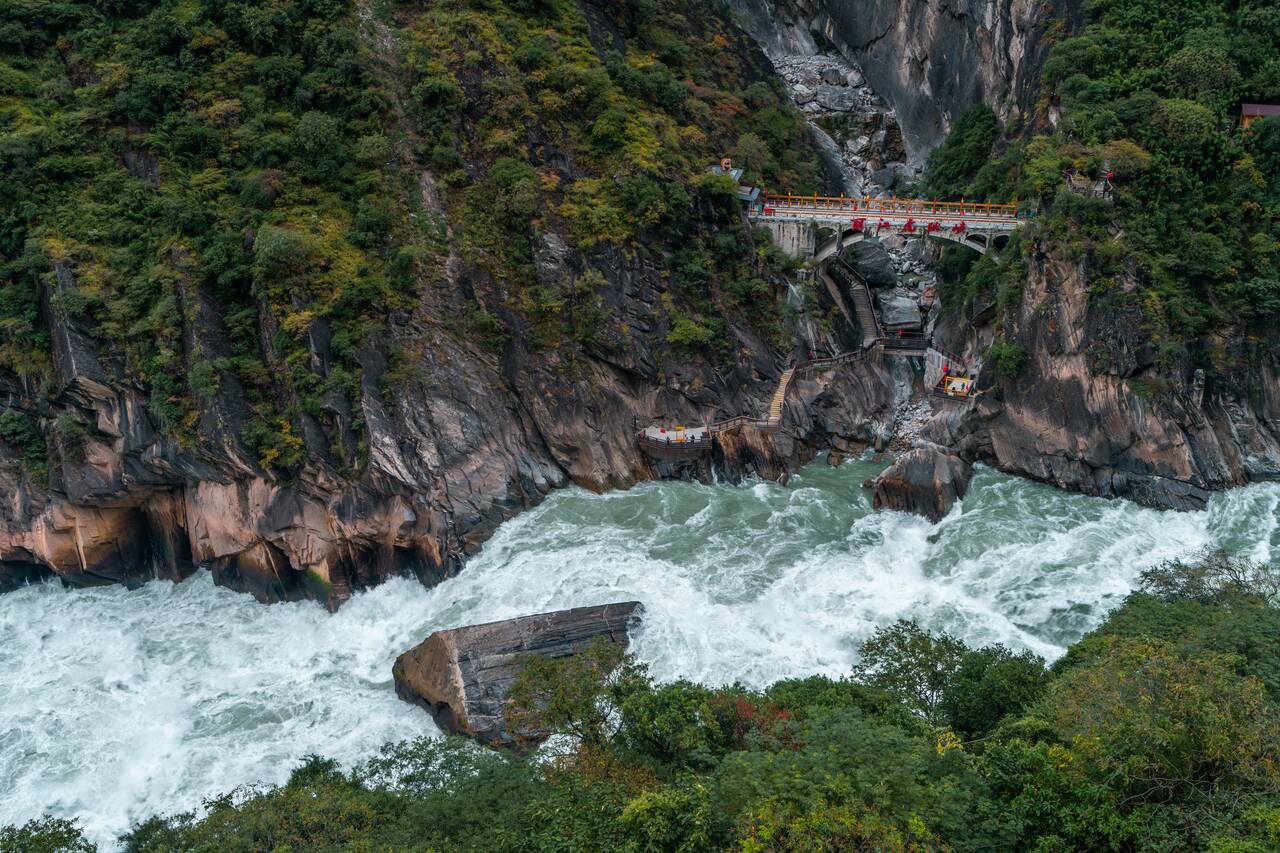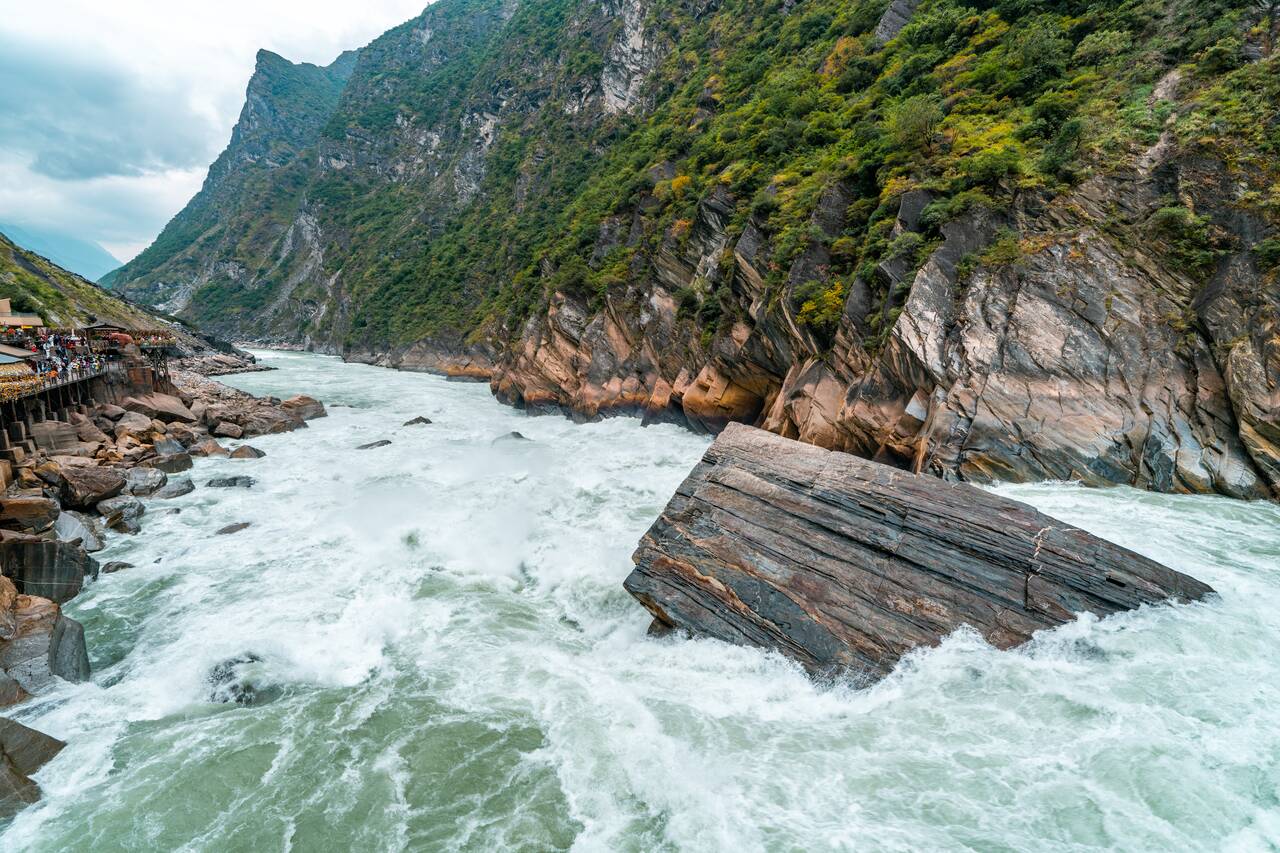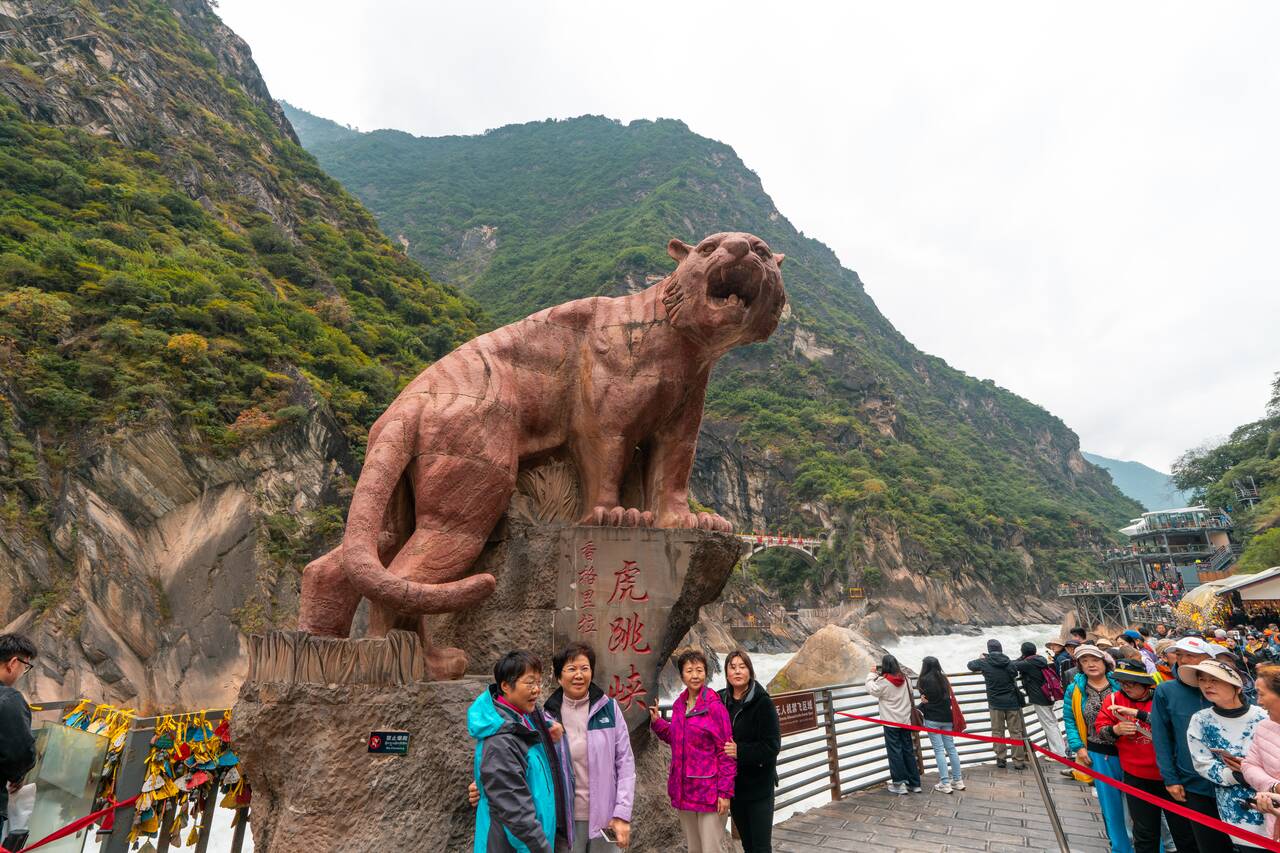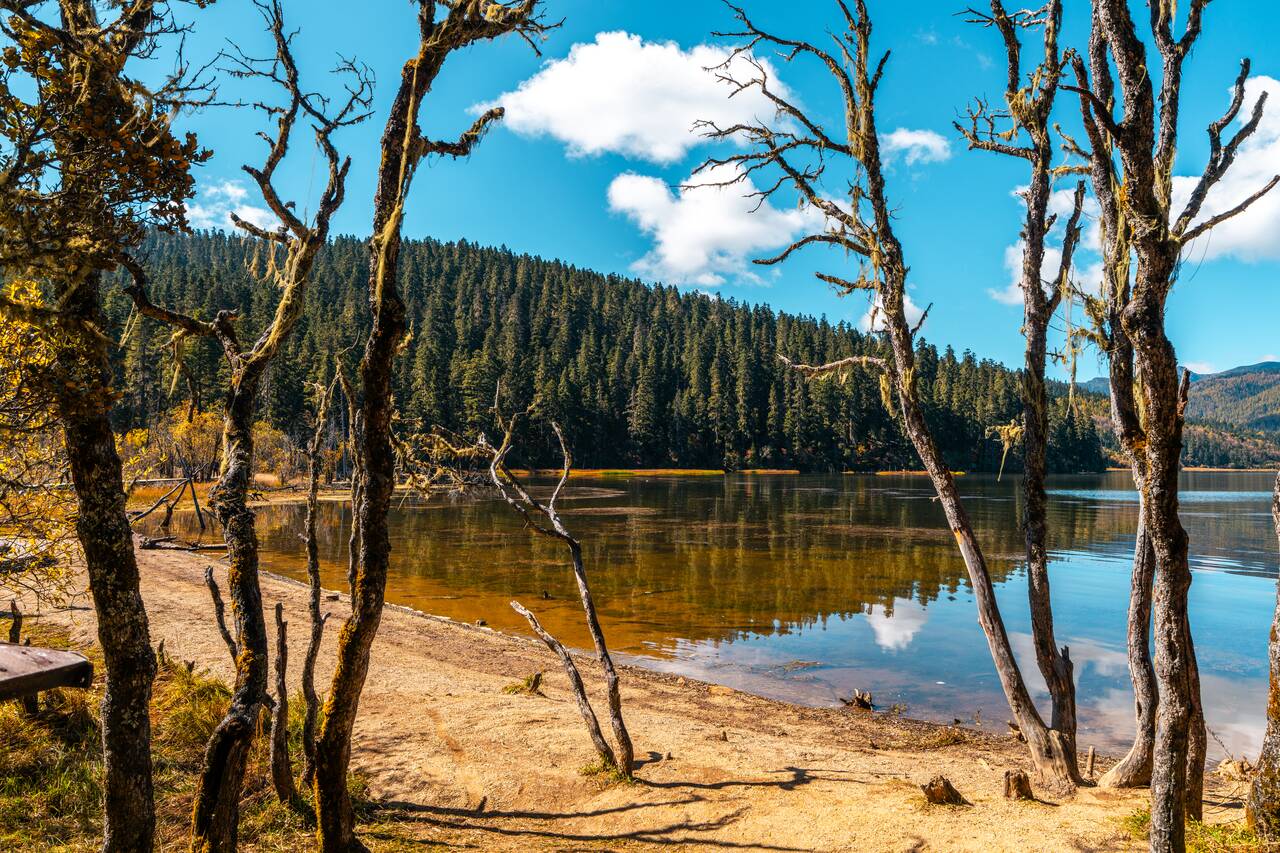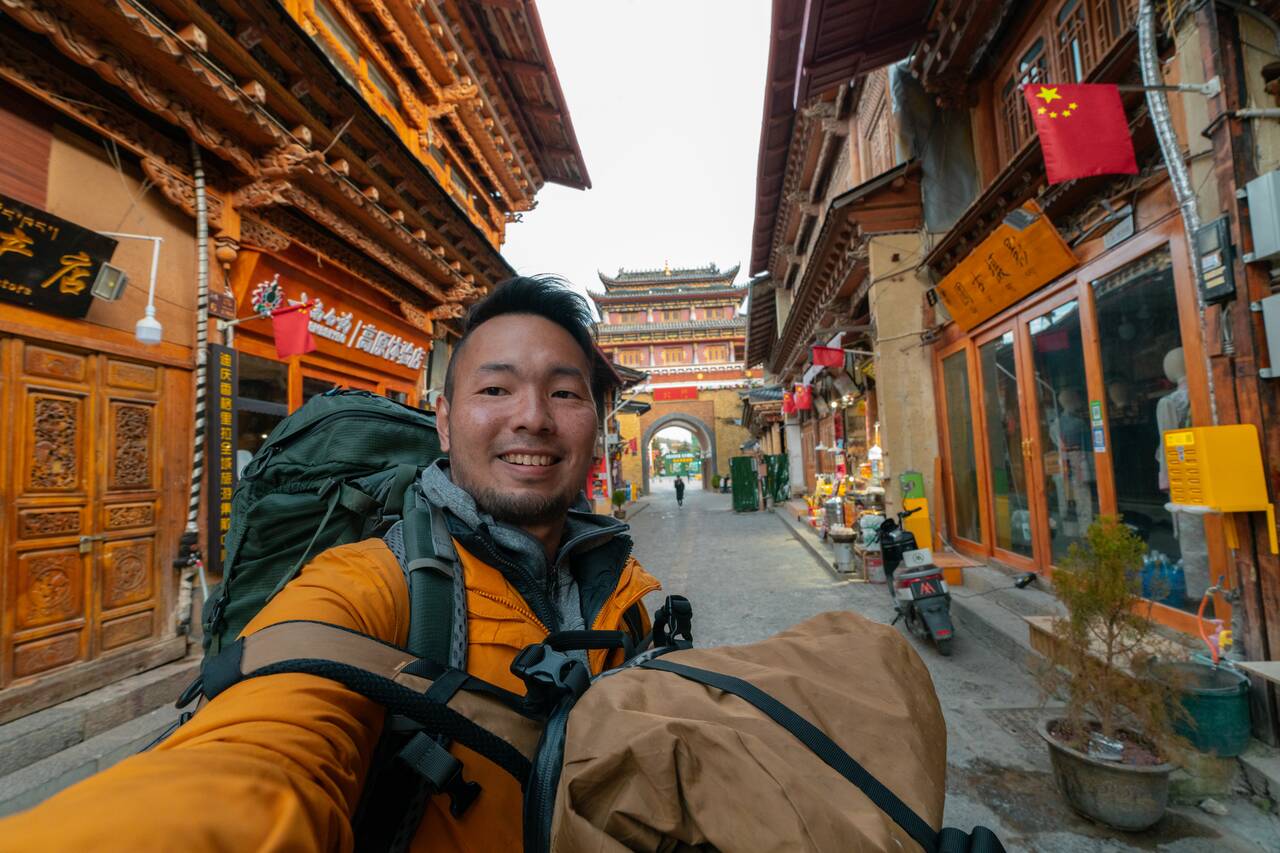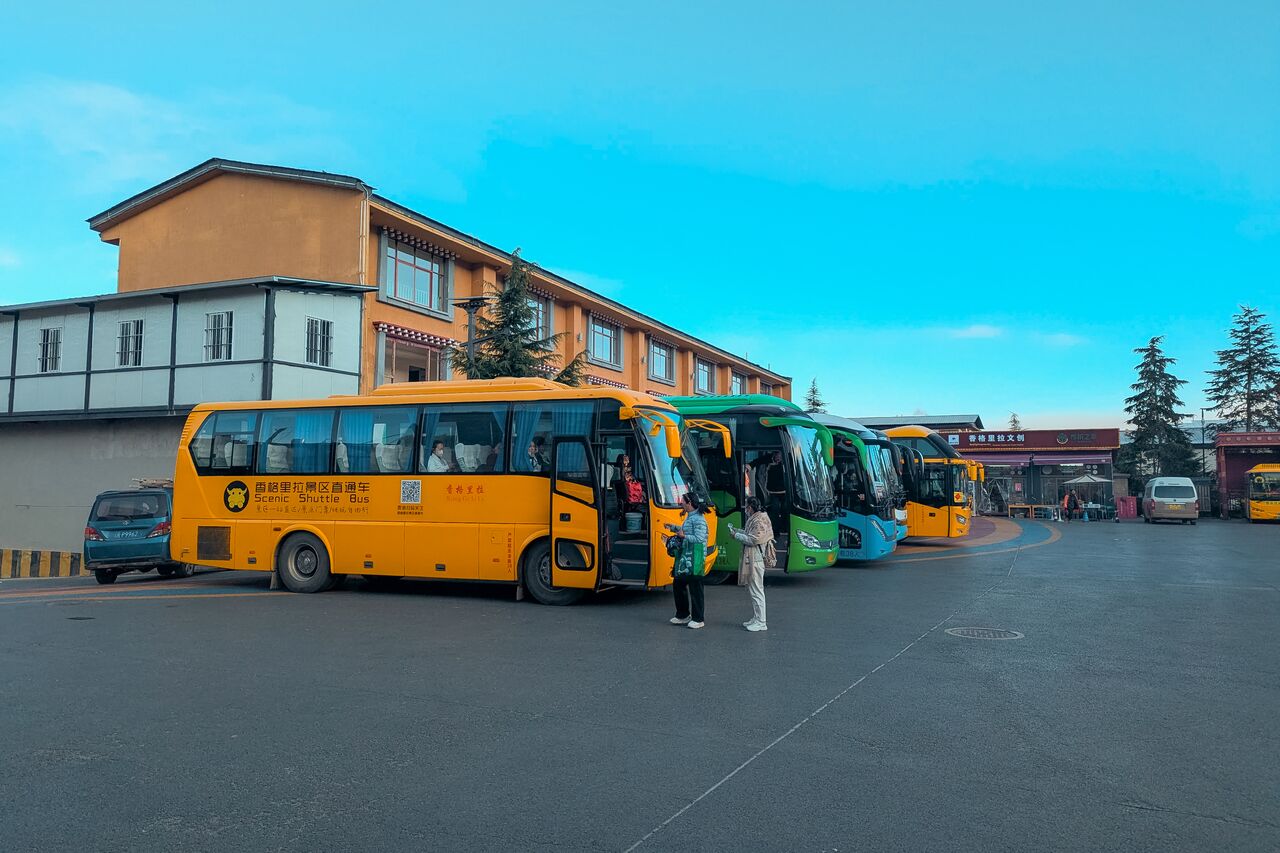Shangri La, tucked high in the mountains of northern Yunnan, is a place where Tibetan culture, dramatic landscapes, and centuries-old legends converge. Formerly known as Zhongdian, the town was officially renamed in 2001 after the mythical paradise described in James Hilton's novel Lost Horizon to boost tourism.
Whether or not it is the real Shangri La, the moment you arrive you will quickly see why this corner of China has inspired stories of hidden valleys, eternal peace, and untouched beauty for generations. From the grand Tibetan monastery of Songzanlin to the lush meadows of Potatso National Park, there is plenty to explore and experience.
In this guide, you will find all the information you need to plan the perfect trip to Shangri La, including the best things to do, where to stay, how to get around, and more. Without further ado, here is a complete travel guide to Shangri La:
- Shangri-La Things to Do Map
- Where to Stay in Shangri-La?
-
8 Best Things to Do in Shangri-La
- Visit Songzanlin Monastery
- Spend a Day Exploring Potatso National Park
- Explore Dukezong Ancient Town
- Check Out the View from Dafo Temple at Turtle Hill Park
- Spin the Largest Prayer Wheel in the World
- Dance with the Locals at Sifang Street Square & Moonlight Square
- Visit the Giant Prayer Flags
- Visit Tiger Leaping Gorge on your way to Lijiang
- Things to Know Before Visiting China
- When to Visit Shangri-La?
- How to Get to Shangri-La?
- How to Get Around Shangri-La?
- How Many Days to Stay in Shangri-La?
- What to Pack for Shangri-La?
- Further Reading for China, Hong Kong, and Macau
Shangri-La Things to Do Map
Where to Stay in Shangri-La?
8 Best Things to Do in Shangri-La
1. Visit Songzanlin Monastery
Songzanlin Monastery is probably one of the most famous landmarks in Shangri-La and it is one of my favorite places in the city. This beautiful monastery sits about 5 km north from Shangri-La at an elevation of roughly 3,380 meters and it is considered the largest Tibetan Buddhist monastery in Yunnan, so much so that some people often refer to it as the "Little Potala Palace". This is as close to Tibet as you can get without having to go on an expensive organized tour.
Construction of the monastery began in 1679 and was completed around 1681, under the spiritual guidance of the Fifth Dalai Lama. The architecture is a striking blend of Tibetan fortress style with Han Chinese elements, with its glistening golden roofs and imposing architecture that echo the Potala Palace of Tibet.
Although the monastery is a living religious site home to more than 700 monks, visitors are welcome to explore it and climb its steep stairs to enjoy stunning views of the surroundings. One important note is that photography is not allowed inside the prayer halls, a common rule in Tibetan Buddhist places of worship.
- Luminous · Gu Yu | a corner of East poetry luxury residential design (Budget)
- Shangri-La Yunbian View Homestay (Mid-Range) 👍 Top Pick
- Z Hotel (Shangri-La Dukezong Ancient City) (High-End)
- Potatso National Park Shuttle Service 🏅 Top Pick
There are several highlights within the temple complex, which covers more than 16,000 square meters (about 1.6 hectares). This includes the main temple, surrounding halls, courtyards, monks’ quarters, and the connecting paths and courtyards across the hillside, with the main highlights being Zhacang Hall, the main temple at the highest point, Jikang Hall, featuring murals and traditional thangka art, and more.
There are also many viewpoints around the monastery, like the one in front of the entrance with its elevated platform, as well as a walkway that will take you around the lake where you can see the monastery's perfect reflection in the water. Unfortunately, when I was there, the pathway around the lake was closed for some reason.
To get here, you will first have to take a Didi taxi to the Songzanlin Monastery Ticket Office and then you can get the ticket at the ticket office for 75 CNY per person. The ticket should also include the shuttle bus taking you to and from the monastery entrance. Once you have the ticket, you can proceed to the shuttle bus and it will take you there in 10 minutes.
Once you arrive, you can take photos of the monastery from the elevated platform outside and hike up to the top of the monastery for an incredible view of the surroundings. With so many buildings to see and viewpoints to visit, you can expect to spend at least 1.5 hours to 2 hours here. The monastery is open from 7:40 AM to 6:30 PM with the last admission at 4:00 PM.
2. Spend a Day Exploring Potatso National Park
One of the best day trips you can take from Shangri-La is to visit Potatso National Park, also known as Pudacuo National Park. This breathtaking nature reserve is located about 22 km northeast of Shangri-La at an elevation of roughly 3,500 meters, where beautiful alpine lakes, wetlands, forests, and grasslands are waiting for you to explore.
There are three main stops inside the park, with the first being the Youyou Budao Trail, a riverside walking path. While it may not feature any major attractions, it is a peaceful way to escape the crowds and offers the chance to spot yaks and horses along the route.
It's not a must-stop, but if you have time to spare and you want to be around peaceful nature, it is worth it. The trail takes about 45 minutes before you arrive at a man-made waterfall where you can catch the shuttle bus to the next stop.
The second stop is one of the park’s most stunning features, which is Shudu Lake, an alpine lake perched at around 3,705 m above sea level. The lake is surrounded by raised wooden boardwalks that you can stroll around and enjoy the peaceful nature and mountain views.
At the lake, you can either choose to hike around the lake for 2 hours to the next stop or take a 15-minute boat ride across the river and enjoy the stunning view at your own leisure. The boat should cost around 50 CNY extra while the hiking is free, and you get to see some of the rare and unique flora and fauna along the way.
Out of all the stops, I enjoyed this lake the most, with its wide open space and unobstructed views set against lush green surroundings. There are also prayer flags, shops, and cafes that allow you to fully immerse yourself in the environment. It is also a good place to rest before the 2.5-hour hike around the lake.
The last stop is Bitahai Lake. The bus will need to backtrack to the entrance and take another route around the mountain, so be sure not to get off at the first stop. Once you arrive, you will walk along an elevated walkway for about 15 minutes to reach the lake.
The lake is beautiful, but the walkway ends just before the shoreline, which is a bit disappointing. I would love to see it extended further, or even up the hillside, so visitors can appreciate the lake from above. At the bus stop here, you will also find a restaurant where you can have a quick lunch before you head back to the entrance and go back to Shangri-la.
To get to and from Potatso National Park, you will need to take the scenic shuttle bus service, which you can book here. The shuttle costs around 243 CNY per person. Once you receive your email receipt, you must exchange it at the scenic bus stop located here, where the staff will direct you to the correct bus to the park. Buses depart from 8:40 AM to 1:00 PM at roughly 30-minute intervals, and return trips from Potatso leave after 1 PM from the same location they drop you off, every 30 minutes.
If you are deciding between Potatso National Park and Balagezong Grand Canyon, I chose Potatso because, according to my friend who has traveled extensively in China, Balagezong is privately owned and highly commercialized. The Tibetan village there feels very artificial. Since it was a beautiful, clear day when I visited, I preferred to spend my time surrounded by nature instead.
3. Explore Dukezong Ancient Town
Dukezong Ancient Town is the ancient old town of Shangri-La that dates back more than 1,300 years, with origins traced as far back as the Tang dynasty. Historically, Dukezong was an important stop on the Ancient Tea Horse Road, the trade route that connected Yunnan with Tibet and beyond.
Merchants and mule caravans would pass through here as it was a key hub where tea, salt, horses, and other goods were traded. Because of this, Dukezong developed as a vital economic and cultural center, contributing to its rich multi-ethnic character.
Unfortunately, much of the old town was destroyed during a devastating fire in January 2014, which consumed a significant portion of its historic buildings. In response, a large-scale reconstruction was undertaken, with a focus on preserving the original architectural style and cultural integrity.
While the buildings you see today are not original, the restoration does an excellent job of maintaining the town’s unique and charming Tibetan character, making it feel more authentically Tibetan than anywhere else I visited in Yunnan.
The ancient town also comes alive at night, with streets bustling with people. The two main squares, Moonlight Square and Sifang Street Square, fill with both locals and travelers dancing together as part of the town's traditions, which is something I’ll discuss in more detail next.
4. Check Out the View from Dafo Temple at Turtle Hill Park
One of the most beautiful spots in Dukezong Ancient Town is Dafo Temple, a large Tibetan Buddhist temple built on top of Guishan Park (Turtle Hill Park) overlooking the entire city. It is the perfect place to begin your exploration of the ancient town and also get a panoramic view of the city from above.
The temple is accessible via steep stairs, which is quite challenging especially considering the high altitude of the city at around 3,300 meters, but the payoff is well worth it in my opinion. At the top, you’ll find the Big Buddha Temple, a multi-story temple with beautiful Tibetan architectural style, and a walkway you can walk around for a 360° view of the city.
Not just that, right next to the temple, you will also find the massive golden prayer wheel, the largest of its kind, which is another awesome thing to do while here. In order to enter the park, you will have to book a time slot online which you can scan from WeChat app, get yourself registered, pick a time slot, and then you will get a QR code where you can scan to enter the gate and start climbing.
It was a little hassle to get the ticket, to be honest, as the app is all in Chinese, so you have to constantly translate every input on the form, and there are quite a few of them to fill in. At least, it's free, and once you input your ID and passport number, you should be good to go. The access to the temple and the prayer wheel is between 7:30 AM to 8:30 PM.
5. Spin the Largest Prayer Wheel in the World
One of the most iconic landmarks you will see right away the moment you arrive at Dukezong Ancient Town is the massive gold-colored Prayer Wheel located on top of Turtle Hill, right next to Dafo Temple. Standing at 21 meters high and weighing about 60 tonnes, it’s considered to be the largest prayer wheel of its kind in the world.
Built in 2002, the wheel was erected to commemorate the renaming of Zhongdian to Shangri‑La. It is made from gold-plated pure copper and richly decorated: the upper portion features carvings of four major Bodhisattvas, enlightened beings who postponed their own nirvana to help all others achieve enlightenment, while the lower part displays the Eight Auspicious Symbols of Buddhism.
Because of its size and weight, turning the wheel is not a solo task. I tried it myself, and trust me, it will humble you instantly, as it did for me 🤣, since I couldn’t even move it alone. Moving the wheel requires several people, and you can join in when there are enough participants.
According to traditional belief, one full rotation of the wheel is equivalent to reciting the “Om Mani Padme Hum” mantra 1.24 million times. Three rotations are considered particularly auspicious, believed to bring blessings, peace, and good fortune.
At night, the giant prayer wheel is often illuminated, giving it a radiant, jewel-like glow that creates a magical sight from the hilltop. Be sure to visit both during the day and at night. Since the wheel is part of Dafo Temple, you will need to access the temple via its free time-slot booking app. The temple is open from 7:30 AM to 8:30 PM.
6. Dance with the Locals at Sifang Street Square & Moonlight Square
One of the stranger, albeit extremely cool, traditions you will see here, as well as in other villages around this region of China, is that locals like to gather together at night around town squares like Sifang Street Square and Moonlight Square, and perform guōzhuāng wǔ, a traditional Tibetan-style circle dance.
The music, rhythm, and colorful movements of locals dressed in a mix of traditional and modern attire create a vibrant scene of people dancing in circles, almost like a whirlpool of rainbows. Travelers are often invited to join, forming hand-in-hand circles with the locals as well, so prepare to show your steps when you're here 😂. I happened to stumble upon it during an evening stroll, and it was truly a sight to behold.
What's cool is that this dancing is not a staged tourist performance, but part of the town's evening social ritual. It reflects a strong sense of ethnic unity, with people from various local groups, Tibetan, Han, and others, celebrating together. Participating in or simply watching the dance will provide you with an authentic glimpse into Tibetan-highland culture and the communal life of this old town.
If you time your visit to coincide with the evening gatherings, it is a unique opportunity to experience the warmth, rhythm, and traditions of Shangri-La firsthand that you can't find anywhere else in China but here, so be sure to come and check out Sifang Street Square and Moonlight Square after sundown.
7. Visit the Giant Prayer Flags
Another cool attraction in Shangri-La is the Giant Prayer Flags, located about a 10-minute taxi ride south of Dukezong Ancient Town. If you travel to Shangri-La by train, you may even catch a glimpse of them along the way.
These are vertical flags, similar to the "darchog" style in Tibetan tradition, anchored on poles or stakes so the wind can catch them easily. The colors follow traditional Tibetan symbolism: blue, white, red, green, and yellow, representing the five elements and spiritual harmony.
When the wind blows through them, locals believe that the prayers or mantras printed on the flags are carried into the sky, sharing good wishes, protection, and blessings with all beings. It is a popular photo spot among local travelers, and if you have time to spare, it’s definitely worth a visit.
8. Visit Tiger Leaping Gorge on your way to Lijiang
Last but not least, if you are planning to visit Lijiang after, you can go and visit Tiger Leaping Gorge on your way to Lijiang with this organized shuttle service which departs Shangri-La at 8 AM to Lijiang with an hour stop at Tiger Leaping Gorge.
The price should be around 188 CNY per way, and you can also do the opposite way if you are traveling from the other direction to Shangri La. This is great for those who are looking to maximize their time in Yunnan and want to see the Tiger Leaping Gorge without losing a day. You can book the shuttle service here.
If you decide to book this shuttle service, make sure you have WeChat installed and linked to your phone number so the tour agency can message you the meeting time, location, and the bus's license plate number. They usually send the details around 9 PM the night before.
Things to Know Before Visiting China
- Always Carry Your Passport: Everything revolves around your passport/ID in China, and it’s often used interchangeably as your main form of identification. Many major tourist attractions require you to show your passport when buying a ticket, and the ticket will then be linked to it. You’ll scan your passport again to enter. The same applies to high-speed trains. It’s best to carry your passport with you at all times while traveling in China.
- Get an eSIM: China’s cashless economy relies on constant internet access, so having a data connection is essential. I highly recommend getting an eSIM or a local SIM card for your trip. An eSIM is often better because the service is usually based in Hong Kong, which bypasses China’s Great Firewall, meaning you can access apps like Instagram and YouTube without a VPN. I suggest checking eSIM options on Klook or Trip.com, as they tend to be the most affordable.
- Use AMap to Navigate: Google Maps doesn’t work well in China, so local apps like AMap are much more informative and accurate for getting around. It even provides metro information, making it easy to navigate city subway systems. I used AMap throughout my entire trip, and it worked perfectly! In this guide, I’ll be linking locations with AMap links instead of Google Maps, so be sure to download it before your trip.
- Use LetsVPN to Bypass the Great Firewall: As you may know, many major websites such as Google, Facebook, Instagram, TikTok, and more are blocked in China. To access them, you’ll need a VPN like LetsVPN installed on both your phone and laptop before you arrive in China. This is crucial as once you're in the country, you won’t be able to search for or download VPN apps. I used LetsVPN during my trip, and it worked very well throughout. The service is affordable too, with a free tier offering limited data or a basic unlimited plan for just 5.99 USD per month.
- Connect Alipay with Your Credit Card: First, download Alipay from the app store, set up your account, and link it to your credit card. This will be one of the two main ways you’ll pay for services in China. Alipay also has mini-apps built in, such as Didi (China’s version of Uber), so you don’t need to download separate apps, and you can use them directly through Alipay. Very convenient!
- Get a Transport Card Working in Alipay: Once you have Alipay set up, you’ll need to verify your account before you can activate a transport card for metro and bus rides. First, if you’re not currently in the city you want to use, tap the city name in the top-left corner and select the correct city. After that, tap the “Transport” button and request a transport card. You’ll be asked to upload a photo of your passport for verification. Once approved, your transport card will be issued, and you can use the QR code to scan and pay for buses and metro rides.
- Get WeChat Set Up: WeChat is another essential app for communicating with locals, thanks to its built-in translation feature. It’s also widely used for payments as Alipay only works about 70% of the time, while WeChat is commonly needed for paying individuals, buying entry tickets at certain attractions, and more. Setting up WeChat can be a bit tricky though because you need verification from an existing user. The easiest way is to ask your hotel’s reception to help verify your account when you arrive in China, which is how I got mine activated.
- Use Trip.com / Trip App: For hotels, day trips, attraction tickets, train tickets, flights, and everything in between, you can use Trip.com or the Trip app to book all your travel needs. It’s very convenient, offers a great user experience, and has a generous cancellation policy that gives you more flexibility when traveling in China.
When to Visit Shangri-La?
The best time to visit Shangri-La is from April to June and September to October, when the weather is mild, the skies are clear, and the landscapes are at their most vibrant. Spring brings blooming wildflowers and fresh green meadows, while autumn offers crisp air and golden colors across the highlands.
Summer (July to August) is the warmest period, but it is also the rainy season. Showers are usually short but frequent, and popular attractions can get crowded. Still, this season is great for those who enjoy lush scenery and do not mind the occasional rain.
Winter (November to March) is cold and dry, with temperatures often dropping below freezing, especially at night. Snowfall transforms the region into a peaceful, white wonderland, making it a beautiful time to visit if you are prepared for the cold. However, some trails and high altitude routes may become inaccessible due to weather conditions.
I visited in autumn, and it was perfect. There was a good mix of clear and cloudy days, and the weather was easy to plan around. I went and spent a day at Potatso National Park, and it was a beautiful day. The crowds were also lighter than in summer, and beautiful autumn colors were popping up everywhere. I highly recommend visiting during this time.
Avoid visiting during Chinese New Year (variable Jan–Feb) and National Day Golden Week (Oct 1–7) as Shangri-La gets extremely packed, especially in the Old Town. That goes for other places in China as well. Avoid these periods like a plague!
How to Get to Shangri-La?
By Air: The quickest way to arrive is by flying into Diqing Shangri La Airport, located about 5 km from the city center. There are direct flights from major cities like Kunming, Lijiang, Chengdu, Chongqing, Guangzhou, and sometimes Beijing or Shanghai depending on the season. Once you land, taxis and airport buses can take you into town in around 15 minutes.
By High-Speed Train: The Lijiang–Shangri-La railway network now connects Shangri-La with Lijiang, Dali, and Kunming, making it the easiest way to travel to Shangri-La from anywhere in Yunnan. From Lijiang, the journey takes around 1 to 1.5 hours. You can book the train here.
By Bus: For an affordable way to get to Shangri-La, you can also go with long-distance buses. The most common route is from Lijiang, which takes about 4 to 5 hours through mountain roads with beautiful views along the way. There are also buses from Dali and even from the Sichuan side, such as Daocheng, though travel times can be long (6+ hours) and affected by weather. Keep in mind that, to get bus tickets in China as a tourist, you will have to go to the bus station the day before and get the ticket in person.
How to Get Around Shangri-La?
By Walking: Walking is the best way to explore Dukezong Ancient Town. The narrow alleys are all pedestrian-friendly, and many areas cannot be accessed by cars. If you are staying inside or near the Old Town, you will be able to walk to restaurants, shops, and most attractions.
By Didi: For places outside the ancient town like Songzanlin Monastery, DiDi is the most convenient way to get around. Rides are cheap, quick, and easy to arrange through the app. You can use it through Alipay mini app. You can read more about Alipay here. This was how I got around the lake most of the time.
By Scenic Buses: For day trips to Potatso National Park or Balagezong Grand Canyon, you can go with an organized scenic bus which you can book from here. Once you have the bus booked, you will have to go exchange it at the scenic bus stop located here and they will direct you to the bus you have to take. Very easy and convenient.
How Many Days to Stay in Shangri-La?
2 nights and 1 full day is the minimum I recommend. On your first day of arrival in the evening, you can go explore Dukezong Old Town, and the next day, you can spend half the day exploring Potatso National Park, and in the afternoon, go and visit Songzanlin Monastery and the rest of the city. For a more relaxed pace, 3 nights and 2 full days would be ideal, giving you enough time to dedicate a full day to Dukezong and its nearby attractions.
What to Pack for Shangri-La?
As you may already know, I am an advocate of light traveling, and indeed, packing light for a journey like this is a unique art form. Here are some packing tips for your upcoming trip to Shangri-La, China:
- Walking/Hiking Shoes: With all the walking and possible hiking during your travel, a comfortable pair of shoes is a must. I recommend the Timberland 3-Eye Classic Boat Shoes that are my go-to pair for long strolls and hikes.
- Breathable Shirts: Given the potential for hot weather, pack a few breathable shirts for your outdoor adventures.
- Shorts/Jeans: Anticipate lots of walking during your travels? Be sure to pack some breathable shorts and a pair of Levi's jeans for when the weather cools. For women, leggings are excellent for both hot and cold climates, so consider packing some as well.
- Fleece Jacket: For colder weather, layering is the key, and a fleece jacket makes an excellent insulating layer. I recommend the Columbia Steens Mountain Fleece (for women).
- Outer Shell Jacket: An outer shell jacket is great for windy or rainy conditions. I highly recommend the Columbia Watertight Jacket (for women). It's lightweight, breathable, and even comes in a cool orange color.
- Down Jacket: In freezing temperatures, a down jacket is essential. The Columbia Men's Lone Fir Hooded Jacket (for women) is my choice. They are warm, lightweight, and available in various colors.
- Wool Beanie: A wool beanie is perfect for keeping your head and ears warm.
- Wool Gloves: I always have wool gloves handy to keep my hands warm in cold weather.
- Wool Socks: Don't forget to keep your feet warm with wool socks.
- Microfiber Towel: A Microfiber towel is the ideal backpacker's towel due to its lightness, quick drying, and compressibility.
- Camera: You should also pack a good camera for your trip so that you can capture all the beautiful experiences you might have. I recommend the Sony a7R V camera together with the Sony 24-70mm f2.8 GM II lens, which is probably the highest-performance camera and lens combination you can get right now.
- Power Bank: Keep your electronics charged on the go with a 20,000+ mAh Power Bank.
- Water Bottle: The Hydro Flask Trail Water Bottle is a great insulated water bottle to have with you in cities or on hiking trails. It is lightweight and can keep your water cold or warm for more than 12 hours. It's a total game-changer.
- Universal Adapter: You'll need just one universal adapter to plug in your electronics in any country you visit.
- Packing Cubes: Packing Cubes will help you save space in your backpack and keep all your belongings organized.
- Daypack: The Langly Alpha Globetrotter is my go-to everyday camera backpack. It's large enough to carry all my travel gear, and it comes with plenty of slots and pouches. Plus, it's stylish as hell!
- Large Backpack: You will need a large backpack to carry all of your stuff. I recommend the Osprey Atmos AG 65L backpack. With excellent weight distribution and a lifetime guarantee, you can't go wrong with Osprey.
For more information on what I pack in my backpack for this trip, check out: My Packing List: 60 Travel Essentials.
Now that we have all the information we need, it's time to start planning your trip! Here are some resources to help you get going:
Are you planning to travel independently? Be sure to check out my guide on How To Plan A Backpacking Trip here.
Further Reading for China, Hong Kong, and Macau
Looking for more information about your trip to China, Hong Kong, and Macau? Here are a collection of articles that you might find useful:
- Want to spend 5 days in Hong Kong? Here's a complete itinerary for you: Hong Kong in 5 Days: A Backpacker's Itinerary.
- First time in Hong Kong, but you are not sure where to begin? This is the guide for you: Visiting Hong Kong: 12 Awesome Things to Do & More.
- Macau is often called the Las Vegas of Asia, offering larger-than-life entertainment, a unique blend of Portuguese heritage, and so much more. If you’re planning a visit, be sure to check this out: Discover Macau: 10 Cool Things to Do & More.
- Guangzhou is the fourth-largest city in China and one of the wealthiest, with major trade activities taking place in and around the city for over 2,000 years. With so much history and so many places to explore, you’ll definitely want this comprehensive travel guide: Explore Guangzhou: 12 Incredible Things to Do & More.
- Guilin is, hands down, one of the most beautiful places I’ve seen in China. If you’re planning to visit, here is the comprehensive travel guide I wish I had! Check it out: Visiting Guilin: A Complete Travel Guide
- Looking for a complete itinerary to Guilin? Check out: 5-Day Itinerary in Guilin
- Want to visit Huangguoshu Waterfall, the largest waterfall in Asia? Check out this travel guide: Huangguoshu Waterfall: A Complete Travel Guide
- Visiting Guizhou and want to experience the rich culture of the Miao people? Why not visit Xijiang, the largest and arguably the most beautiful Miao stilted village in the region. Here’s a complete travel guide: Xijiang Village: A Complete Travel Guide
- Dali is one of Yunnan’s most charming and culturally rich destinations and a great place to start acclimatizing before visiting other high-altitude areas in the province. If you are planning a trip, be sure to check out this travel guide: Exploring Dali: A Complete Travel Guide
- Yulong Snow Mountain, one of the most beautiful mountains in Yunnan, is located in Lijiang, a destination you shouldn’t miss when visiting China. If you plan to visit Lijiang, check out our travel guide: Exploring Lijiang: 10 Best Things to Do & More
- For more articles about China, visit the China travel guide, or explore my guides to Hong Kong and Macau.
- Planning a trip to East Asia? Explore all my articles on the East Asia Travel Guide page.
- You can find all my Asia-related articles here: Asia Travel Guide.
- For more of my travel guides like this, visit my Destinations page.
Disclosure: This post may contain affiliate links.

